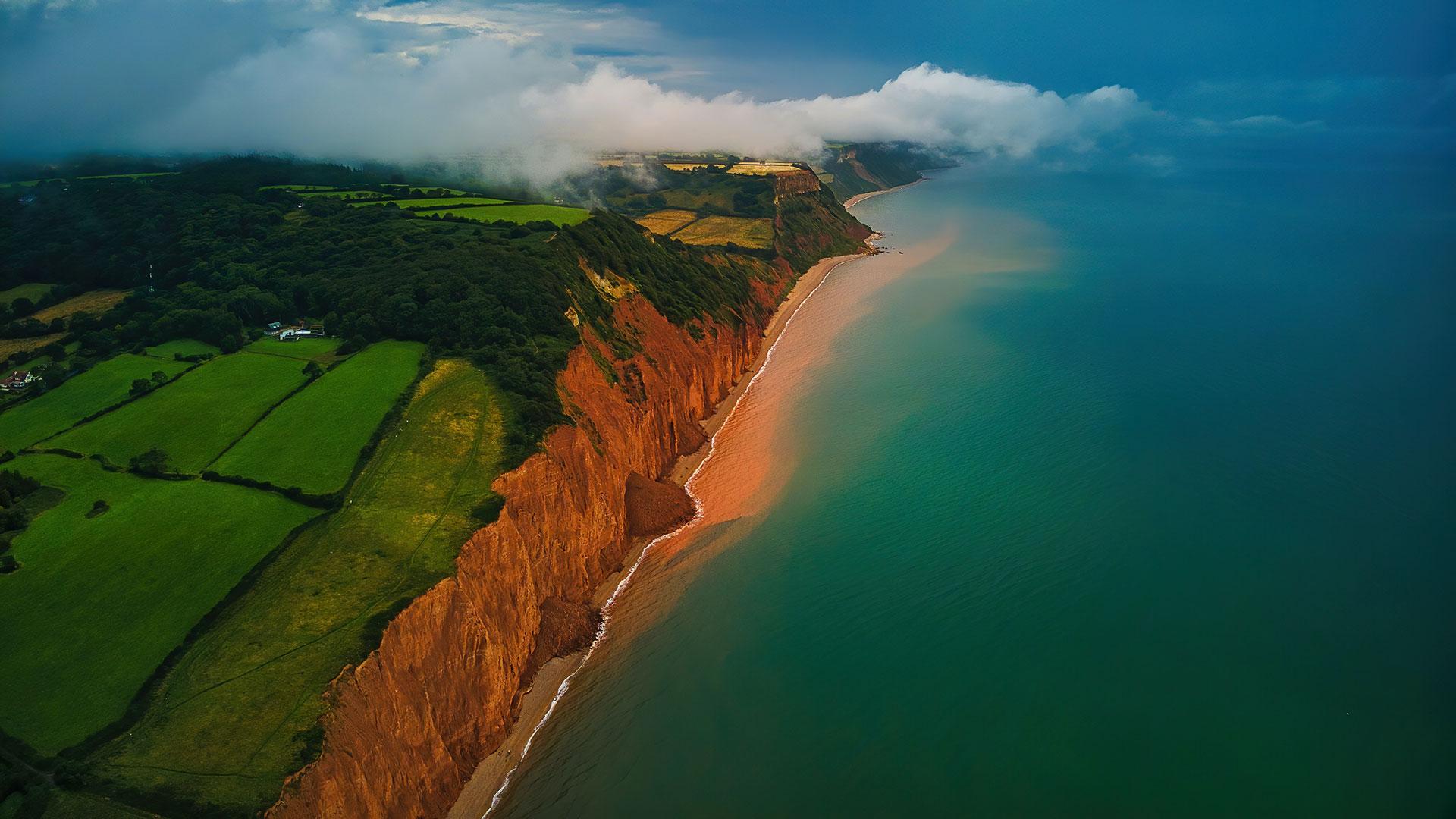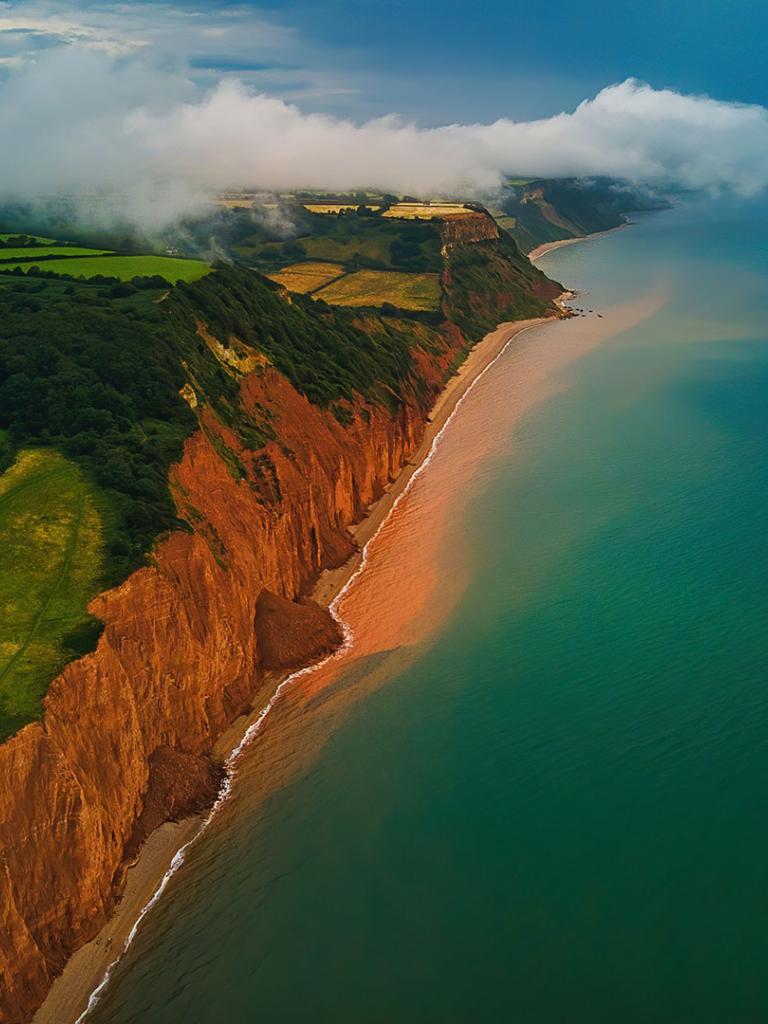05 August 2024
14 December 2021
About
This study has two main objectives: to advance SEVIRI and FCI ocean colour developments around algorithms and products, and to implement them in a multi-mission prototype processor in order to achieve early demonstration and user engagement.
Satellite Ocean Colour observations have been conventionally performed from polar orbits. Nevertheless, the benefits of Ocean Colour from geostationary platforms have been well documented by the community. Currently, pioneering dedicated missions from Korea are in orbit (GOCI and GOCI-II) and future geostationary missions are planned by a number of space agencies. EUMETSAT operates the geostationary satellite series Meteosat Second Generation (MSG) carrying on board Spinning Enhanced Visible and Infrared Imagers (SEVIRI) and has started to operate Meteosat Third Generation (MTG) with Flexible Combined Imagers (FCI). SEVIRI and FCI have not been developed to specifically consider ocean colour requirements. Despite this, there has been a significant interest in exploiting SEVIRI and FCI for Ocean Colour applications. Initial algorithms have been developed by the community and by an early EUMETSAT study to provide water turbidity and related parameters from SEVIRI and to explore FCI capabilities for additional ocean colour parameters, such as chlorophyll concentration. This study builds on these developments and provides significant scientific improvement, additional water parameters, and prototype implementation.
Objectives
The Study’s objectives were to
- develop a prototype processing for the retrieval of highest-possible quality geostationary Ocean Colour products from SEVIRI and FCI for open ocean, coastal and in-land water coverage, with defined SEVIRI open ocean limitations;
- embed the SEVIRI and FCI processing in the multi-mission modules of EUMETSAT’s existing ocean colour prototype processor.
Overview
The study followed EUMETSAT’s initial SEVIRI activity in 2015/2016, which defined User Requirements for water turbidity and related ocean colour geostationary products. The 2015/2016 activity had defined the SEVIRI ocean colour algorithm to perform the atmospheric correction and to retrieve water remote sensing reflectance, Rrs at the two SEVIRI’s VIS and NIR bands, and water turbidity. The study has provided SEVIRI’s ocean colour prototype processor as well as product quality specifications and validation results. The current GEO-OC study capitalised on this study as well as on the significant advances in operational ocean colour made by EUMETSAT in the past years through dedicated studies (OC-SAC and SACSO). The work was thus divided into several tasks:
Task 1: Scientific review and requirement consolidation – A detailed review of the existing atmospheric corrections, either already implemented or proposed for the study, cloud masking, and in water product algorithms. The review was accompanied by small-case prototyping to support the design of the GEO-OC prototype processor both in terms of science (e.g. bringing state of the art development in the previous SEVIRI-WT processor) and implementation (modernising the existing code to fit new standards).
Concerning the atmospheric correction reviewed within this task, see Table 1 for their use in the prototyping. The existing GEO atmospheric corrections from the previous study were transposed from C to python in this study and small-scale prototyping allowed to confirm that the implementation was correct. The next atmospheric corrections proposed for this study, OC-SAC and SACSO (FCI only) were adapted to fit the GEO requirements, e.g. downgrading the number of bands used. The small-scale prototyping tests for OC-SAC on OLCI products transformed to GEO-like product showed the marine reflectance retrieved by the GEO processor from the GEO-like radiometry is generally well correlated with the standard products. GEO data processed by OC-SAC should be relevant to capture marine events with strong signal (compared to the noise), such as blooms and river discharges, and process clear waters.
Regarding SACSO, the same approach as for OC-SAC (reducing the number of available bands to the processor in order to fit the FCI bands) was used, and tests were run on Sentinel-2 MSI data, since this sensor is closer to FCI already, and allows the use of the 1610nm band, which does not exist on OLCI. The tests performed during this task showed that the application of SACSO to FCI scenes could be possible.
Table 1 Overview of the atmospheric correction modules and their use in different contexts
| Module | Cloud masking | Gaseous correction (python module) | Rayleigh correction (python module) | BPC | CWAC | SACSO aerosol corr. | Polymer aerosol corr. | + multiple readers |
|---|---|---|---|---|---|---|---|---|
| GEO-OC prototype | « Basic », EUMETSAT cloud mask or alternative HYGEOS cloud mask | X | X | X | planned | X | X | FCI, SEVIRI |
OC-SAC (+IPF) | « Basic » or IPF | X | X | OLCI | ||||
| SACSO prototype | « Basic » | X | X | X | OLCI | |||
| Polymer v5 (next version) | « Basic » | X | X | X | Many |
Task 2: GEO-OC algorithm development – This work comprised a complete rework of the existing code from the previous study, as well as the implementation and adaptation of the OC-SAC and SACSO code to fit the SEVIRI and FCI characteristics. In parallel, the water products algorithms were adapted and implemented as well.
Several atmospheric correction strategies are implemented as processing modules:
- The first are the heritage algorithms for processing SEVIRI Water turbidity products (Kwiatkowska et al, 2016, Ruddick et al, 2014), including the aerosol retrieval and correction algorithms from Neukermans et al., 2012, denoted here as N2012. This algorithm has three different options for accounting for the water reflectance in the NIR: (a) a “linear” method, based on a linear model of water reflectance, (b) a “non-linear” method based on a non-linear model, and (c) a “SWIR” method, relying on the black pixel assumption in the SWIR bands. These methods apply only to the red to SWIR spectral range, thus a further step is required for processing the blue and green bands of FCI.
- The second one is the OC-SAC study designed to process the OLCI sensors (Mazeran et al., 2023), which contains two main steps: the Bright Pixel Correction (BPC), decoupling the water and atmospheric components of the signal in the red to SWIR spectral range, similarly to N2012. The second step is the Clear Water Atmospheric Correction (CWAC), in which the aerosol properties are estimated in the red/NIR spectral range and extrapolated to the rest of the visible spectrum. Therefore, the CWAC is applicable to FCI only, and can be applied after N2012 or BPC.
- The third one is the SACSO study designed for multi bands ocean colour sensors and here only applicable to FCI but not SEVIRI (Steinmetz and Mazeran, 2021).
The general algorithm scheme is presented in Figure 1.

The bio-optical products that have been implemented are the following:
Turbidity, suspended particulate matter, bbp at 640, KdPAR, euphotic depth, Secchi depth, and chlorophyll-a (only available for FCI). There are also flags to identify coccolithophore blooms, extreme high biomass blooms, and extreme cyanobacteria blooms or surface scum.
Task 3: Production – This task was dedicated to the generation of the SEVIRI and FCI Level 2 data necessary for calibration, evaluation, and validation purposes.
Task 4: Evaluation and Validation – This task entailed the assessment of the water reflectances and a subset of the bio-optical products generated by the processor: suspended particulate matter (SPM) concentration and turbidity. The evaluation was done based on matchup analysis with in situ data (both from ships campaigns, and fixed point stations, Figure 2), time series for diurnal variability comparison at fixed point stations, and intercomparison with standard OLCI Level 2 water products (Figure 3).


An example of the first chlorophyll product retrieved from FCI (commissioning data, provided by the FCI team) is presented in the diurnal animation (Figure 4).


Figure 4 MTG FCI first results: Southern North Sea diurnal observations of water reflectance at 640 nm

Task 5: Project outreach – This comprised the communication to users and ocean colour communities throughout the study as well as the organisation and hosting of a User Consultation Workshop which took place at EUMETSAT’s headquarters on December 7th and 8th 2023.


